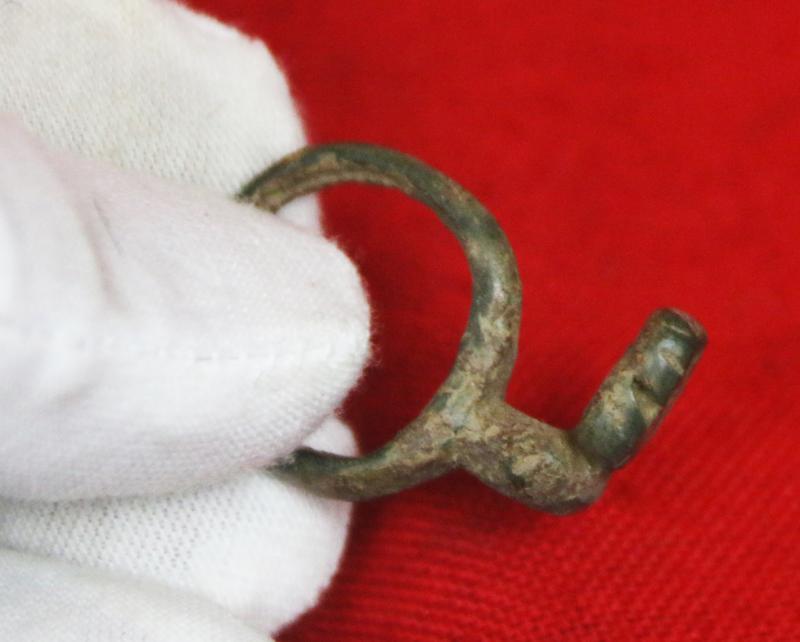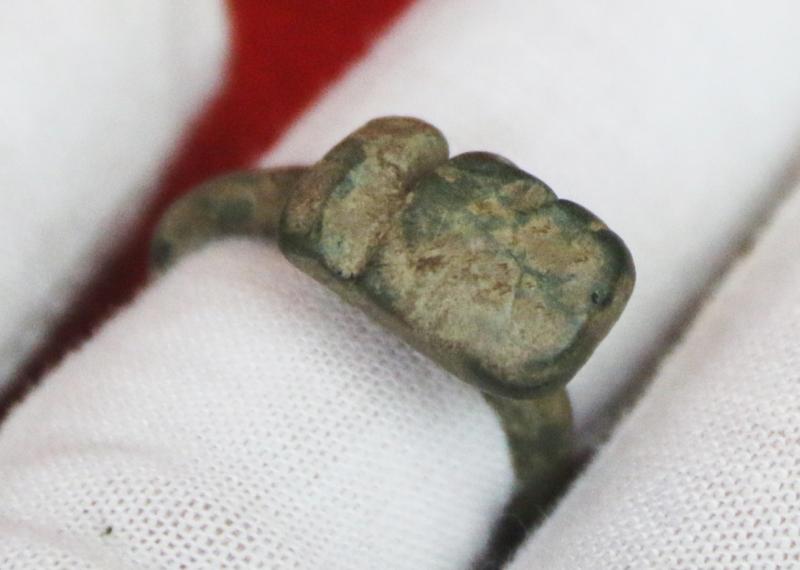Ancient Roman Key Ring, A Bronze Amulet-Ring Key. 1st to 3rd Century A.D.Around 1900 to 1800 Years Old. Worn From The Period of Emperors Trajan, Hadrian, Marcus Aurelius, Lucius Verus, & Commodus
Ancient Roman bronze key ring, an intriguing piece of functional jewellery.
For lack of pockets in their togas, the ancient Romans often wore keys to important boxes, etc on their fingers. The most intriguing items of Roman security hardware seem to be keys and lock bolts. Keys were used mainly for doors, chests, boxes, caskets, cupboards and padlocks. Less often they were used for ceremonial or decorative purposes, such as matron keys, jewelry items and votive offerings.
It is alleged that some ring keys were worn by women as symbols of household authority, as "keeper of the keys". This is probably true, but such are difficult to identify as having served that purpose. The wooden Egyptian pin tumbler locks were over two thousand years old by this time. Roman engineers modernized them and other lock constructions by replacing the wooden parts with corresponding parts made of metal.
The clumsy Egyptian pin tumbler locks were transformed into elegant Roman pin tumbler locks of steel, fitted with an ingenious Roman invention, steel springs. The locks were often tiny masterpieces in terms of both precision and design. All Roman door locks can only be opened from one side. There were illustrations in Le case e monumenti di Pompeii, four volumes by Fausto and Felice Niccolini, printed in Naples in 1854–96. Another author, Albert Neuburger, used the same images in his book on ancient technology, Die Technik des Altertums, printed in Leipzig in 1921. The cities of Pompeii and Herculaneum were buried in ash when the nearby volcano Mount Vesuvius erupted in 79 AD, and were eventually forgotten.
Most likely worn on the finger, or around the neck as an amulet
Illustrations in Technik des Altertums. Reconstruction of a Roman pin tumbler door lock of metal, inside and outside, and an example of a key. Deutsches Museum, Munich. The first reconstruction of this lock was made by Louis Jacobi (1836–1910) for the Saalburg Museum north of Frankfurt.
For example; With regards to some expert conservation methods of bronze objects {and some other materials} The dirt from the surface of the object could be removed manually using a scalpel under magnification. Care would be taken not to dislodge the powdery, corroding surface. Where the surface was in particualrly bad condition the dirt will be left in situ and small areas might be locally consolidated using 2.5% HMG Paraloid B72 (methyl ethyl methacrlylate) in 50:50 Acetone (propan-1-one/dimethyl ketone) and Industrial methylated spirits (ethanol,methanol).
Eminantly wearable today, size M 1/2 UK size
Code: 25497
175.00 GBP




